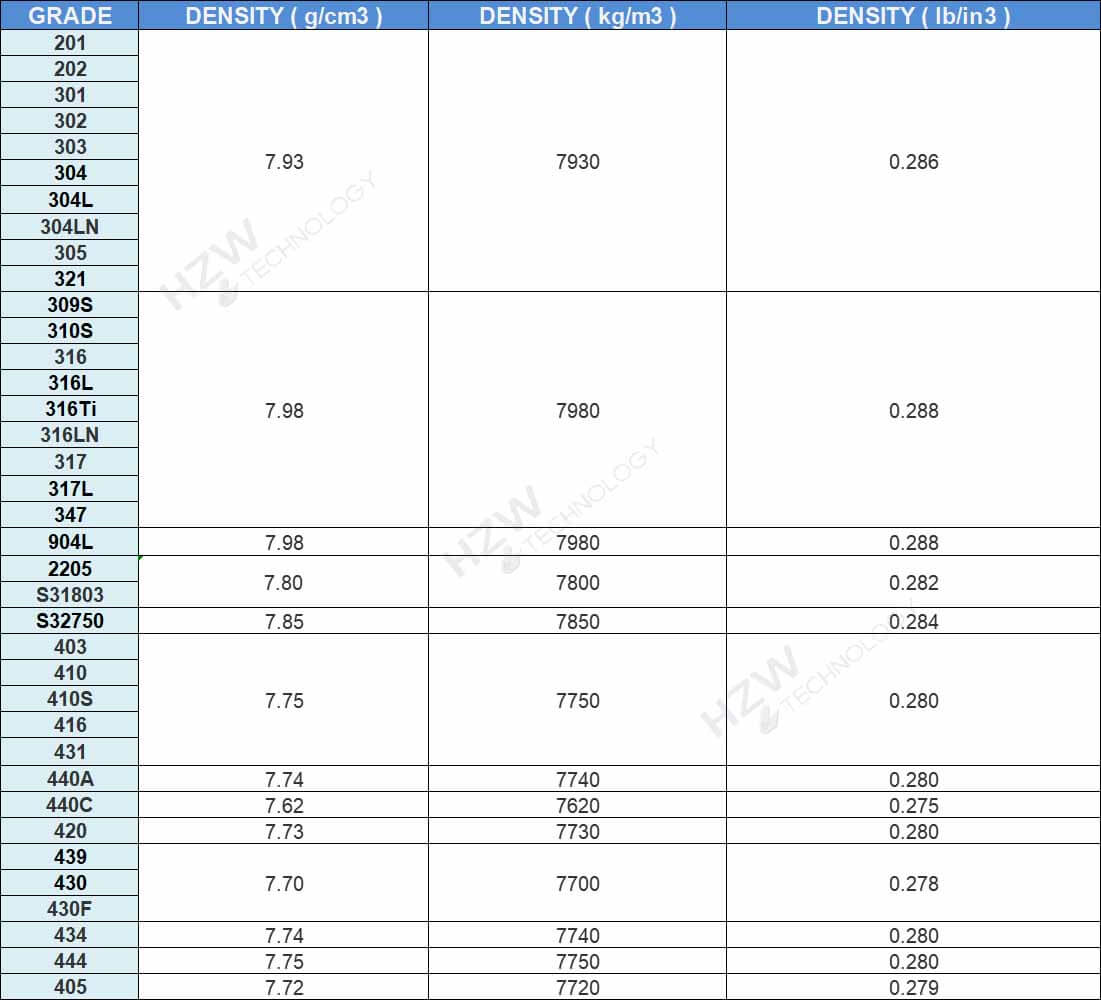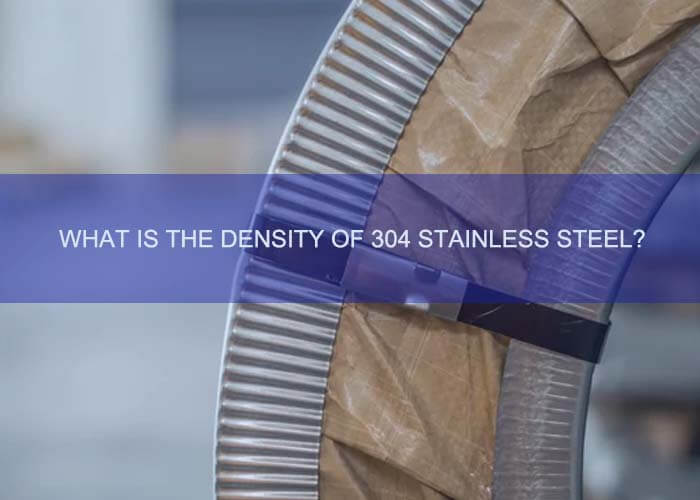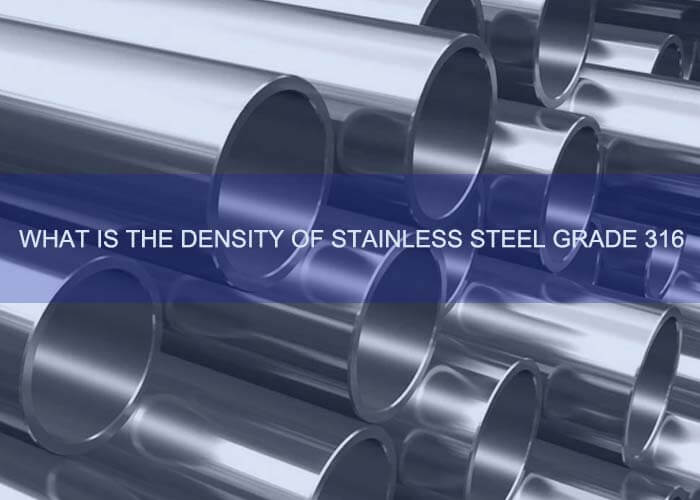Frequent inquiries arise regarding the density of stainless steel, encompassing both stainless steel 304 and stainless steel 316.
When considering the density of stainless steel, you’ve arrived at the appropriate place.
If you want to learn more about the stainless steel density, this article is very helpful for you.
Let’s keep reading.
What is density?
In broad terms, the term “density” pertains to the quantity of a substance contained within a specific space.
From a more scientific perspective, density is quantified as the mass per unit volume. Mathematically represented, the formula is as follows:
p = m/V
Within this equation, density (p) equals the mass (m) divided by the volume (V).
Density is also classified as an intensive property, indicating that the density of an object remains constant regardless of the quantity.
Regarding units of measurement, density can be expressed in kilograms per cubic meter (kg/m³), grams per cubic centimeter (g/cm³), grams per cubic meter (g/m³), or pounds per cubic inch (lb/in³).
What is density of stainless steel?
Stainless steel density signifies the mass of the substance within a given unit of volume.
This property is a characteristic feature of stainless steel, with its density typically falling between 7.6 g/cm³ and 8.0 g/cm³.
Stainless steel is a widely utilized material composed of a minimum of 10.5% Chromium, along with other elements that combine to create its distinct structure.
These components includes Carbon, Silicon, Manganese, Phosphorus, Sulfur, Nickel, Molybdenum, Titanium and Copper. This steel is recognized for its exceptional strength and remarkable resistance to corrosion.
Variations in chemical compositions and their proportions determine the distinct densities of different stainless steel grades.
Among the stainless steel grades, 304 and 316L are the most commonly used materials with differing densities.
Consequently, the computation of stainless steel weight differs between 304 and 316 stainless steel.
Stainless steel density table chart:

| GRADE | DENSITY ( g/cm3 ) | DENSITY ( kg/m3 ) | DENSITY ( lb/in3 ) |
| 201 | 7.93 | 7930 | 0.286 |
| 202 | |||
| 301 | |||
| 302 | |||
| 303 | |||
| 304 | |||
| 304L | |||
| 304LN | |||
| 305 | |||
| 321 | |||
| 309S | 7.98 | 7980 | 0.288 |
| 310S | |||
| 316 | |||
| 316L | |||
| 316Ti | |||
| 316LN | |||
| 317 | |||
| 317L | |||
| 347 | |||
| 904L | 7.98 | 7980 | 0.288 |
| 2205 | 7.80 | 7800 | 0.282 |
| S31803 | |||
| S32750 | 7.85 | 7850 | 0.284 |
| 403 | 7.75 | 7750 | 0.280 |
| 410 | |||
| 410S | |||
| 416 | |||
| 431 | |||
| 440A | 7.74 | 7740 | 0.280 |
| 440C | 7.62 | 7620 | 0.275 |
| 420 | 7.73 | 7730 | 0.280 |
| 439 | 7.70 | 7700 | 0.278 |
| 430 | |||
| 430F | |||
| 434 | 7.74 | 7740 | 0.280 |
| 444 | 7.75 | 7750 | 0.280 |
| 405 | 7.72 | 7720 | 0.279 |
FAQs of stainless steel density
What is the density of stainless steel in kg/m3?
The average density of stainless steel is 8000 Kg/m3, which is slightly heavier than copper and aluminum alloy.
What is the density of 304 stainless steel?
304 stainless steel is most versatile grade of stainless steel with a density of 7.93g/cm3(7930 Kg/m3).

What is the density of 304 stainless steel in lb/in3?
Converting the metric density to Imperial units, the density of 304 stainless steel is approximately 0.289 lb/in3. This conversion is useful for industries that operate primarily with Imperial unit systems.
What is the density of stainless steel grade 316?
316 stainless steel is also one of the most versatile grades of stainless steel materials with a density of 7.98g/cm3.

What is the density of stainless steel 316 in kg/m3?
The average density of 316 stainless steel is 7980 Kg/m3
Which is heavier mild steel or stainless steel?
Mild steel is heavier than stainless steel. Stainless steel density is not massive enough, but it is still have higher strength.
How is the density of stainless steel affected by pressure and temperature?
From a scientific standpoint, density is directly linked to pressure and inversely related to temperature.
Altering either the temperature or the pressure brings about changes in the densities of stainless steel.
Generally, as temperature rises, density diminishes, while heightened pressure consistently results in increased density.
This correlation holds significance in determining the response of stainless steel or, more broadly, steel, to specific circumstances.
For instance, the selection of materials for aircraft necessitates precise densities to uphold appropriate weight and equilibrium.
The same principle holds true for assessing the creep factor in aircraft, where “creep” denotes the intrinsic tendency of a material to undergo movement or deformation due to mechanical stress or strain.
Clearly, stainless steel or any alloy must conform to these requisites.
Failing to meet these criteria would pose potential risks and lead to costly remedies for material failures.
Why do you need to know the density of stainless steel?
Investigations into the density of stainless steel offer a crucial point of reference for material design and selection.
Diverse sectors within engineering applications demand the utilization of distinct types and specifications of stainless steel materials.
Among the significant indicators for material selection and design, the density characteristics of these materials assume a paramount role.
For instance, within the realm of construction engineering, the selection of stainless steel materials boasting robust strength and excellent corrosion resistance is imperative for structural components. Here, in-depth studies on stainless steel density serve as guiding principles.
Furthermore, the exploration of stainless steel density serves as a pivotal foundation for its processing and practical application.
Throughout the processing and implementation of stainless steel, careful consideration of its density attributes is vital, influencing mechanical properties, corrosion resistance, and processing capabilities. This consideration ensures the alignment of stainless steel material properties with specified requirements.
Lastly, the scrutiny of stainless steel density provides essential backing for environmental conservation and sustainable advancement.
The study of stainless steel density aids in the progression of high-performance, low-density, cost-effective stainless steel materials, catering to the demands of environmental preservation and sustainable progress.
Conclusion
The relationship between the density of stainless steel and various interconnected factors is noteworthy. This understanding will prove valuable in selecting and applying specific grades of stainless steel appropriately.
Manufacturers and metallurgists should itemize these characteristics to ensure adherence to their specifications. While you might lack knowledge regarding the densities of stainless steel 304 and stainless steel 316, it’s imperative to seek a reliable stainless steel manufacturer for optimal cost-effectiveness.
Keep in mind that there’s more complexity beneath the surface when it comes to stainless steel and materials in general. Therefore, acquainting ourselves with its distinct properties is crucial for maximizing its utility, especially for those engaged in steel manufacturing, design, or engineering.
At HZW, you have access to premium-quality stainless steel strips and stainless steel coils available in the market. Feel free to consult our experts for your stainless steel project needs.












